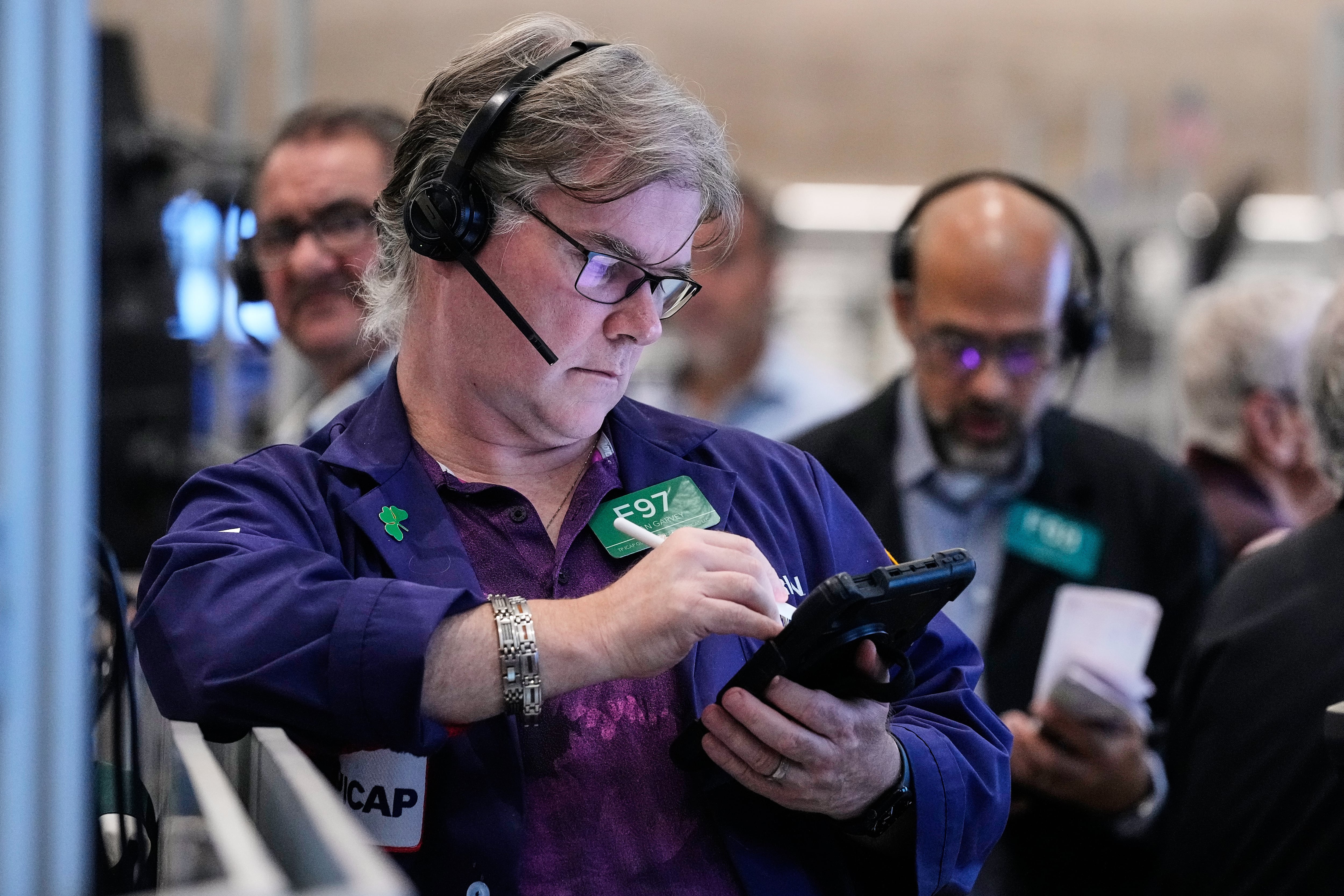WASHINGTON (AP) — Federal Reserve Chair Jerome Powell on Tuesday signaled a cautious approach to future interest rate cuts, in sharp contrast with other Fed officials who have called for a more urgent approach.
In remarks in Providence, Rhode Island, Powell noted that there are risks to both of the Fed’s goals of seeking maximum employment and stable prices. But with the unemployment rate rising, he noted, the Fed agreed to cut its key rate last week. Yet he did not signal any further cuts on the horizon.
If the Fed were to cut rates “too aggressively,” Powell said, “we could leave the inflation job unfinished and need to reverse course later” and raise rates. But if the Fed keeps its rate too high for too long, “the labor market could soften unnecessarily,” he added.
Powell’s remarks echoed the caution he expressed during a news conference last week, after the Fed announced its first rate cut this year. At that time he said, “it’s challenging to know what to do.”
His approach is in sharp contrast to some members of the Fed’s rate-setting committee who are pushing for faster cuts. On Monday, Stephen Miran, whom President Donald Trump appointed to the Fed’s governing board, said that the Fed should quickly reduce its rate to as low as 2% to 2.5%, from its current level of about 4.1%. Miran is also a top adviser in the Trump administration and expects to return to the White House after his term expires in January, though Trump could appoint him to a longer term.
And earlier Tuesday, Fed governor Michelle Bowman also said the central bank should cut more quickly. Bowman, who was appointed by Trump in his first term, said inflation appears to be cooling while the job market is stumbling, a combination that would support lower rates.
When the Fed cuts its key rate, it often over time reduces other borrowing costs for things like mortgages, car loans, and business loans.
“It is time for the (Fed) to act decisively and proactively to address decreasing labor market dynamism and emerging signs of fragility,” Bowman said in a speech in Asheville, North Carolina. “We are at serious risk of already being behind the curve in addressing deteriorating labor market conditions. Should these conditions continue, I am concerned that we will need to adjust policy at a faster pace and to a larger degree going forward.”
Yet Powell’s comments showed little sign of such urgency. Other Fed officials have also expressed caution about cutting rates too fast, reflecting deepening divisions on the rate-setting committee.
On Tuesday, Austan Goolsbee, president of the Federal Reserve’s Chicago branch, said in an interview on CNBC that the Fed should move slowly given that inflation is above its 2% target.
“With inflation having been over the target for 4 1/2 years in a row, and rising, I think we need to be a little careful with getting overly up-front aggressive,” he said.
Last week the Fed cut its key rate for the first time this year to about 4.1%, down from about 4.3%, and policymakers signaled they would likely reduce rates twice more. Fed officials said in a statement that their concerns about slower hiring had risen, though they noted that inflation is still above their 2% target.
President Donald Trump said he has decided to lower his combined tariff rates on imports of Chinese goods to 47% after talks with Chinese leader Xi Jinping on curbing fentanyl trafficking.
The Federal Reserve cut its key interest rate Wednesday for a second time this year as it seeks to shore up economic growth and hiring even as inflation stays elevated. The move comes amid a fraught time for the central bank, with hiring sluggish and yet inflation stuck above the Fed’s 2% target. Compounding its challenges, the central bank is navigating without much of the economic data it typically relies on from the government. The Fed has signaled it may reduce its key rate again in December but the data drought raises the uncertainty around its next moves. Fed Chair Jerome Powell told reporters that there were “strongly differing views” at the central bank's policy meeting about to proceed going forward.
The Federal Reserve will almost certainly cut its key interest rate on Wednesday and could signal it expects another cut in December as the central bank seeks to bolster hiring. A cut Wednesday would be the second this year and could benefit consumers by bringing down borrowing costs for mortgages and auto loans. Since Fed chair Jerome Powell strongly signaled in late August that rate cuts were likely this year, the average 30-year mortgage rate has fallen to about 6.2% from 6.6%. Still, the Fed is navigating an unusual period for the U.S. economy and its future moves are harder to anticipate than is typically the case.
Stocks are rallying toward more records ahead of a week packed with potentially market-moving events. The S&P 500 rose 1% Monday. The Dow Jones Industrial Average added 224 points, and the Nasdaq composite jumped 1.7%. Stocks also climbed in Asia ahead of a meeting on Thursday between the heads of the United States and China. The hope is that the talks could clear rising tensions between the world’s two largest economies. This upcoming week will feature profit reports from some of Wall Street's most influential companies and a meeting by the Federal Reserve on interest rates. Gold fell back toward $4,000 per ounce.
U.S. and Chinese officials say a trade deal between the world’s two largest economies is drawing closer. The sides have reached an initial consensus for President Donald Trump and Chinese leader Xi Jinping to aim to finalize during their high-stakes meeting Thursday in South Korea. Any agreement would be a relief to international markets. Trump's treasury secretary says discussions with China yielded preliminary agreements to stop the precursor chemicals for fentanyl from coming into the United States. Scott Bessent also says Beijing would make “substantial” purchases of soybean and other agricultural products while putting off export controls on rare earth elements needed for advanced technologies.
Some seniors say the Social Security Administration's cost-of-living adjustment won’t help much in their ability to pay for their daily expenses. The agency announced Friday the annual cost-of-living adjustment will go up by 2.8% in 2026, translating to an average increase of more than $56 for retirees every month. Eighty-year-old Florence, South Carolina, resident Linda Deas says it does not match the current "affordability crisis.” The benefits increase will go into effect for Social Security recipients beginning in January. Friday’s announcement was meant to be made last week but was delayed because of the federal government shutdown. Recipients got a 2.5% COLA boost in 2025 and a 3.2% increase in 2024.









